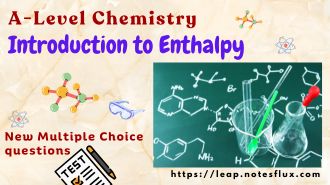NotesFlux
Practice GCSE and English Grammar online with our practice tests
A-Level Chemistry Introduction to Enthalpy
Subject: Chemistry
Level: Easy
437 views
11 likes

Instructions:
Please read the questions carefully and answer them by selecting the most appropriate choices.
Note: Some of the questions may have more than one correct choices.
Try these tests:
Improve your revision with our online practice tests


